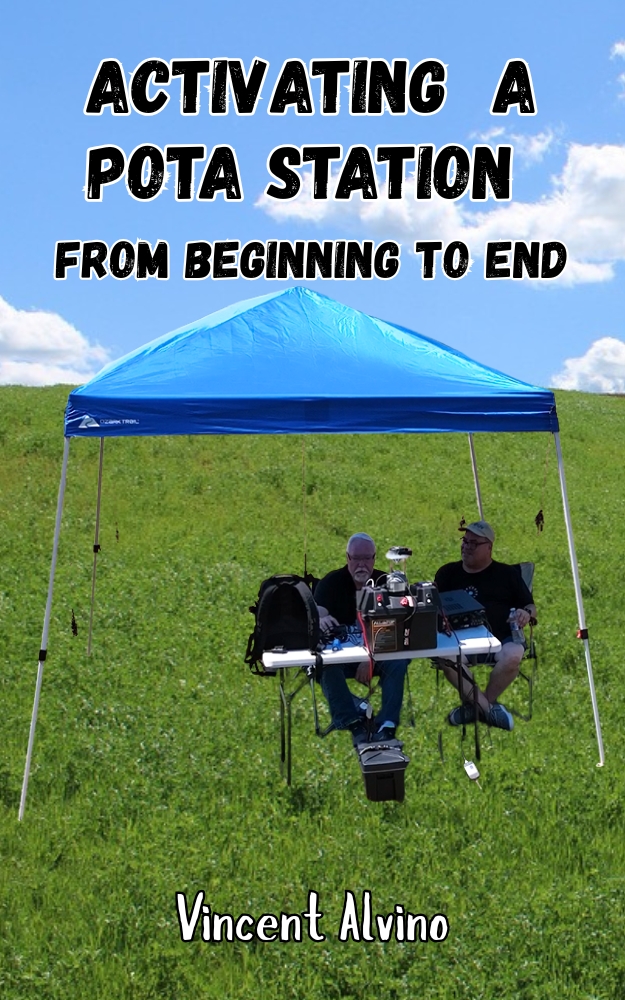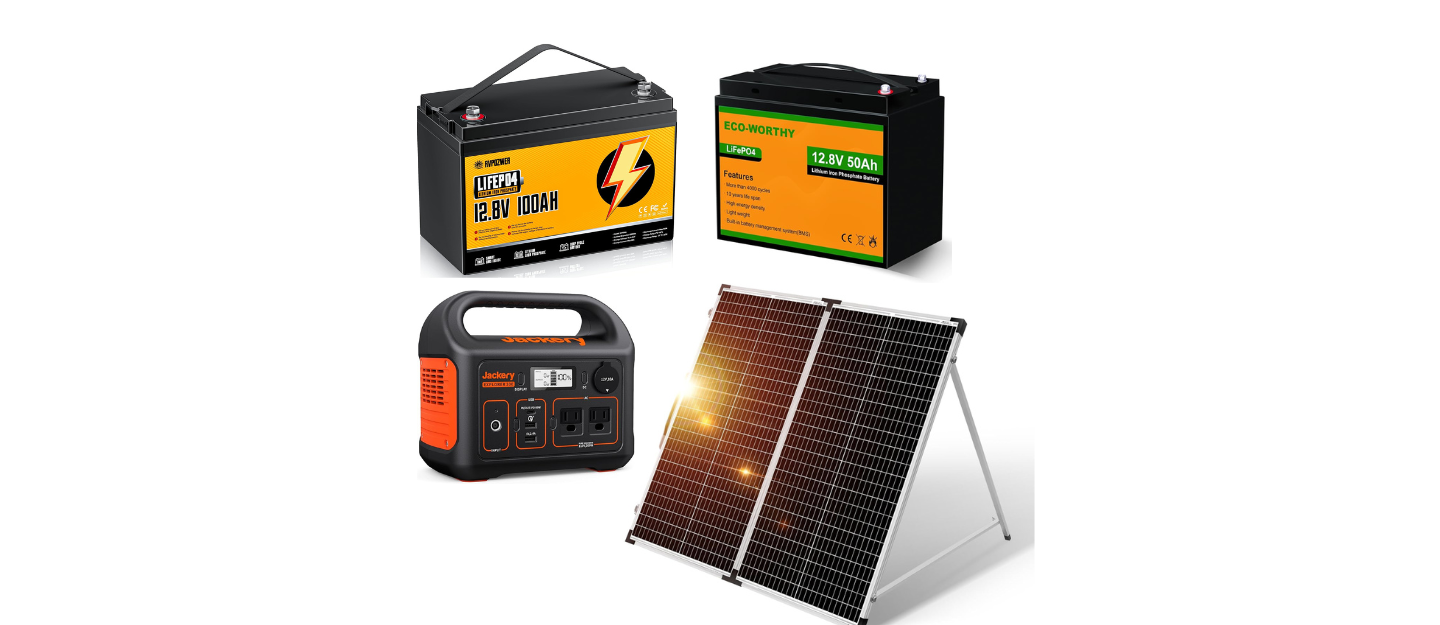Best POTA Power Supplies offer reliable power sources, since radios often run in remote locations without access to mains electricity. Portable operators must balance weight, capacity, and efficiency to keep their radios on the air.
Because every setup is different, several types of power supplies can meet the needs of POTA enthusiasts. Below are some of the best options, each described with features, runtime expectations, and specifications.
Lithium Iron Phosphate (LiFePO4) Batteries
LiFePO4 batteries have become the standard for portable amateur radio. They offer high energy density, long life cycles, and consistent voltage output. Since they weigh less than traditional lead-acid batteries, they are easy to carry into the field. Moreover, they remain stable even under heavy load, which ensures radios maintain clean and reliable power.
A 12Ah LiFePO4 battery can typically run a 10-watt radio like the Xiegu X6100 for 8 to 10 hours. However, higher-power radios such as the Yaesu FT-891 may shorten that runtime to around 4 to 5 hours. With proper care, these batteries deliver over 2000 charge cycles.
Specs (example 12Ah LiFePO4 battery):
- Voltage: 12.8V nominal
- Capacity: 12Ah
- Weight: about 3 pounds
- Cycles: 2000+
- Output: Continuous 10A, peak 20A
Sealed Lead-Acid (SLA) Batteries
Sealed lead-acid batteries remain popular because they are inexpensive and widely available. They deliver steady power, but they weigh considerably more than LiFePO4. Consequently, operators often use them for drive-up POTA activations where portability is not a concern. Their durability under various conditions makes them dependable backups.
A 12Ah SLA battery can run a 10-watt rig for 6 to 7 hours, but voltage sag may reduce efficiency toward the end of the discharge. Larger radios at 100 watts may drain the same battery in just 2 to 3 hours.
Specs (example 12Ah SLA battery):
- Voltage: 12V nominal
- Capacity: 12Ah
- Weight: about 9 pounds
- Cycles: 300–500
- Output: Continuous 10A, peak 20A
Portable Power Stations
Portable power stations combine lithium batteries with inverters, regulators, and multiple outputs.
They often include USB ports, AC outlets, and DC jacks. Because of this versatility, they allow operators to run radios, laptops, and accessories from a single unit.
Although they cost more, they simplify field operation. A 300Wh power station can run a 10-watt rig for 20 to 24 hours, while a 100-watt rig can operate for about 6 to 8 hours depending on transmit duty cycle.
Additionally, these stations can recharge via solar panels, which extends operating time indefinitely.

Specs (example 300Wh power station):
- Capacity: 300Wh (approx. 25Ah at 12V)
- Weight: about 7 pounds
- Outputs: AC, DC, USB, USB-C
- Recharge: AC wall, car, or solar input
- Display: digital battery monitor
Solar Panels with Charge Controllers
Solar power provides ongoing energy during extended POTA activations. Portable folding solar panels pair with a charge controller to feed energy into a battery. Although solar alone cannot always keep up with heavy transmit loads, it extends runtime significantly.
A 60-watt folding panel can recharge a 12Ah LiFePO4 battery in 4 to 5 hours of full sun. While this is slower than wall charging, it ensures continuous operation for multi-day events. Additionally, lightweight panels fold down compactly for transport.
Specs (example 90W solar panel kit):
- Output: 90 watts max
- Voltage: 18V open-circuit, 12V regulated through controller
- Weight: about 6 pounds
- Size: 22” x 18” folded, 44” x 18” opened
- Charge time: 4–5 hours for 12Ah battery in full sun

OUPES Mega 1 Portable Power Station
The OUPES Mega 1 Portable Power Station delivers reliable energy for both outdoor and emergency use. It combines high capacity with advanced LiFePO4 battery technology, ensuring long-lasting performance and excellent safety. Because it provides 2000 watts of continuous output with a 4500-watt peak, this power station can handle demanding devices from radios to refrigerators. Moreover, its 1024Wh capacity supports extended runtimes, making it ideal for camping, RV trips, and home backup.
You can charge the OUPES Mega 1 quickly thanks to its 1400-watt AC input, which restores capacity in just under an hour. Additionally, it supports up to 800 watts of solar charging, allowing you to maintain power in remote locations. Since it is expandable up to 5120Wh with add-on batteries, this unit grows with your power needs. The design also integrates multiple output options including AC, DC, USB, and USB-C ports, so you can run a wide range of devices simultaneously.
The LiFePO4 chemistry ensures a lifespan of over 3500 cycles, which greatly reduces long-term replacement costs. Furthermore, the built-in battery management system actively monitors voltage, temperature, and current, which keeps operation safe under all conditions. While compact and portable, it remains powerful enough to support both high-wattage tools and sensitive electronics.
Specifications
- Battery Capacity: 1024Wh (expandable to 5120Wh)
- Battery Type: LiFePO4, over 3500 cycles
- Continuous Output Power: 2000W
- Peak Power: 4500W
- AC Charging Input: 1400W max (under 1 hour recharge)
- Solar Charging Input: up to 800W with MPPT
- Expansion Capability: supports extra battery packs up to 5120Wh
- Outputs: multiple AC outlets, DC ports, USB-A, USB-C PD
- Safety: battery management system with temperature and voltage protection
- Applications: home backup, camping, RVs, outdoor events, power outages
Best POTA Power Supplies
Picking one of the best POTA power supplies is the lifeblood of any successful Parks on the Air activation. Without a reliable power source, even the best radios and antennas will remain silent. By carefully selecting the right power supply, whether it’s a lightweight lithium battery for quick activations, a solar panel setup for extended outings, or a rugged deep-cycle battery for high-power operations—you ensure your station runs smoothly from the first CQ to the last logged contact.
Equally important, planning your power strategy reduces stress in the field. Carrying backup options, understanding your rig’s consumption, and keeping everything properly charged will prevent the frustration of shutting down early. Many activators find that experimenting with different solutions helps them discover what works best for their style of operating, climate, and equipment.
